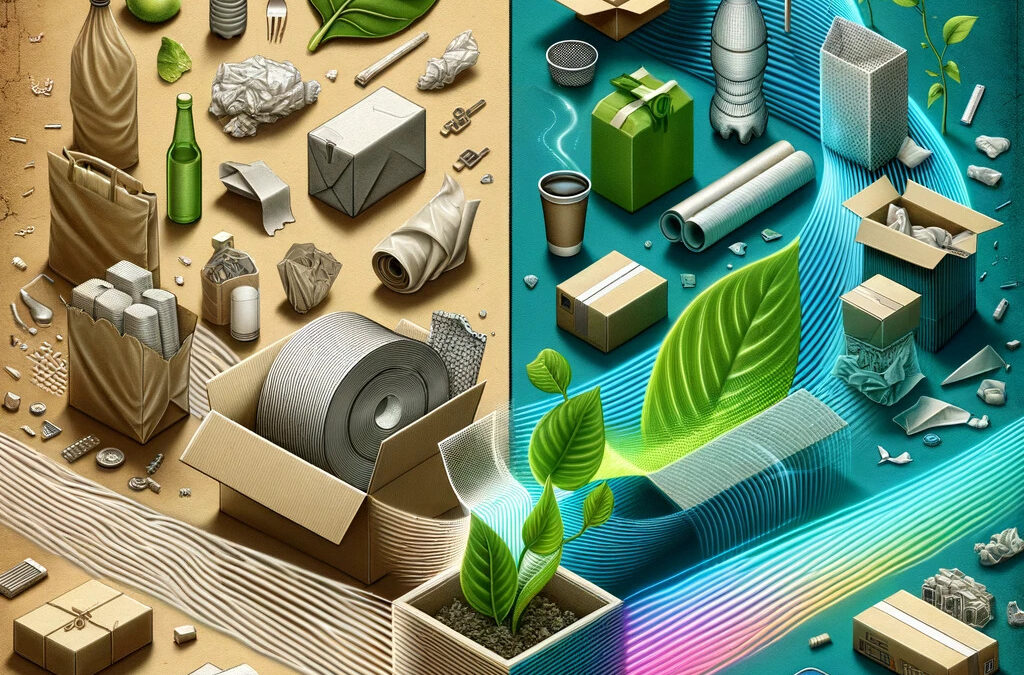Packaging, in its myriad forms, has always been a silent yet pivotal protagonist in the saga of commerce and product evolution. Its primary duty—protecting and preserving goods, from the farm to the supermarket shelf, and finally into our homes—has remained constant. Yet, the materials, technologies, and philosophies guiding packaging practices have undergone profound transformations through the ages. Today, as environmental concerns take centre stage, companies like Hi-tech Packaging are leading the charge in redefining packaging for the modern era.
Historical Overview of Packaging
The story of packaging is as old as humanity itself, beginning with the simplest forms of containment—natural materials like leaves, animal skins, and gourds—used by our ancestors to transport and store food and water. As civilizations advanced, so did packaging techniques. The Egyptians crafted glass containers as early as 1500 B.C., while the Chinese invented paper from pulp around 100 B.C., revolutionizing packaging with a lightweight, versatile material.
The industrial revolution of the 18th and 19th centuries marked a significant turning point, introducing mass-produced packaging forms like cans, jars, and the first iterations of paperboard boxes. These developments not only made packaging more accessible but also began the journey towards the convenience-driven packaging practices we see today.

The Plastic Revolution and Its Impact
The 20th century witnessed the dawn of the plastic era. Synthetic plastics, praised for their durability, light weight, and versatility, soon became the backbone of modern packaging. From polyethylene terephthalate (PET) bottles to high-density polyethylene (HDPE) containers, plastics transformed the packaging landscape. However, this revolution also sowed the seeds of today’s environmental challenges, with plastic waste becoming a global concern.
New Zealand's Plastic Phase-Out
The banning and phasing out of single use plastic bags back in 2019 by the New Zealand Government not only marked a turning point, but also triggered a significant shift in awareness regarding packaging materials and their role in our communities…
Technological Advancements in Packaging
Technological innovation has been relentless, aiming to solve problems of preservation, convenience, and efficiency. Aseptic processing, introduced in the 20th century, extended the shelf life of perishables without refrigeration. Vacuum packaging removed air from packages, slowing down degradation. The 21st century brought smart packaging, incorporating QR codes and RFID tags, bridging the gap between digital convenience and physical products.

Sustainability and the Future of Packaging
As awareness of environmental issues grew, the packaging industry faced a pivotal shift towards sustainability. The focus turned to developing materials that were biodegradable, recyclable, or derived from renewable resources. Edible packaging, made from natural food-grade materials, and innovations in bioplastics, crafted from plants like corn and sugarcane, are at the forefront of this green revolution. Companies are now tasked with balancing functionality with ecological responsibility, a challenge that will define the future of packaging.
Check out Sustainable Business Network to assist your company on being more sustainable overall.
Hi-Tech Packaging: A Journey of Innovation and Sustainability
In this evolving landscape, Hi-tech Packaging stands out for its commitment to safe and sustainability packaging, now and for the future. With a vision to provide cutting-edge packaging solutions, Hi-tech has constantly adapted to emerging trends and technologies. From pioneering recyclable packaging materials to developing smart, sustainable packaging that meets the stringent demands of today’s market, Hi-tech exemplifies how a company can thrive by putting environmental stewardship at the heart of its business model.
Hi-tech’s journey reflects a broader narrative in the packaging industry, one where innovation is inextricably linked with sustainability. The company’s future plans include further investments different sustainable materials and processes that reduce waste, energy consumption, and carbon footprint, aligning with global efforts towards a more sustainable future.
To conclude…
The journey of packaging, from its humble beginnings to its current role at the crossroads of innovation and sustainability, mirrors humanity’s progress and challenges. As we navigate the complexities of environmental impact and consumer needs, companies like Hi-tech Packaging play a crucial role in shaping the future of the industry. Their commitment to advancing sustainable packaging solutions not only addresses the immediate challenges but also sets a precedent for future generations. In the ongoing story of packaging, the chapters on innovation, responsibility, and sustainability are still being written, promising a future where packaging continues to serve humanity, now with a keen eye on preserving our planet.
Till next time,
Team Hi-Tech Packaging


